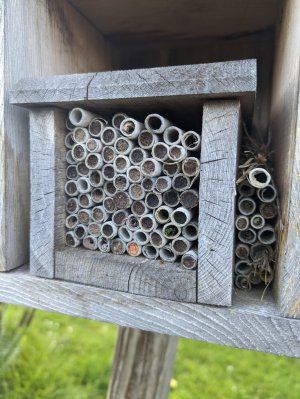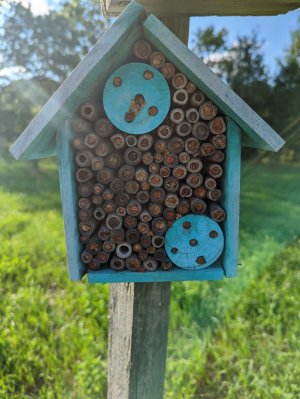I'm no bee expert, but from doing a lot of reading on native pollinators the last 5 or 6 years, and talking via e-mail to 2 Penn State bee experts - there are several native bees that are good pollinators. Blue orchard bees (osmia lignaria), horn-faced bees (osmia cornifrons), leaf-cutter bees (don't remember the scientific name), and others are ALL good pollinators. They're solitary bees, meaning they don't have a "queen" - so they aren't likely to sting because they aren't defending a nest with a "queen" like honeybees. Some are earlier to make their appearance, others mid-season, and still others are later-season arrivals. It's good to have several kinds around for multi-season pollination. (Ruskbucks' bees in his buckwheat in July).
The Penn State profs told me that native bees are already out there, and that providing nesting sites with various-sized holes for the different bees will likely attract them to lay eggs in the holes. Some varieties of mason bees also need a supply of clayish mud nearby to seal off the individual egg chambers in the holes. Crown Bees is a good source of info and nesting material to get started. Check with your local universities for good info as well.
Like Tap, I have them in my wood piles too. They land on my wife and me, hang out for a few minutes, then fly off. They've hit me in the face many times as they fly out of their holes and never a sting. They love our ornamental crab apples in the yard. Our mason bees usually appear in April here.



